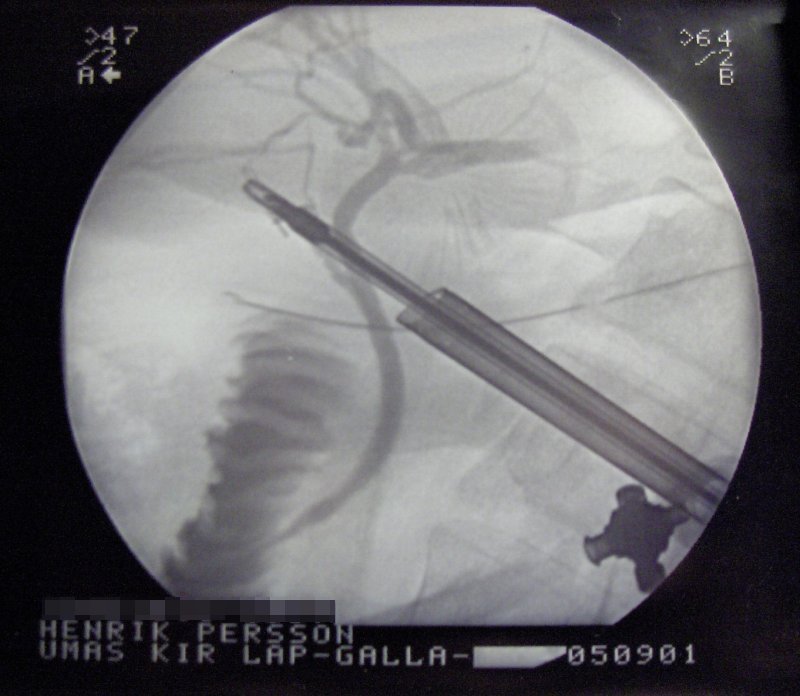Chronic cholecystitis surgery
|
Chronic cholecystitis Microchapters |
|
Diagnosis |
|---|
|
Treatment |
|
Case Studies |
|
Chronic cholecystitis surgery On the Web |
|
American Roentgen Ray Society Images of Chronic cholecystitis surgery |
|
Risk calculators and risk factors for Chronic cholecystitis surgery |
Editor-In-Chief: C. Michael Gibson, M.S., M.D. [1]
Overview
Gallbladder removal, cholecystectomy, can be accomplished by the open surgery or a laparoscopic procedure. Laparoscopic cholecystectomy is the operation of choice in uncomplicated calculous cholecystitis. Open cholecystectomy may be performed in complicated cases or when trained/skilled personal for laparoscopic procedure is not available. Supportive measures are instituted in the meantime to prepare the patient for surgery. These measures include fluid resuscitation and antibiotics. Antibiotic regimens usually consist of a broad spectrum cephalosporin such as ceftriaxone and an antibacterial with good cover against anaerobic bacteria, such as metronidazole.
Surgery
Gallbladder removal, cholecystectomy, can be accomplished by the open surgery or a laparoscopic procedure. Laparoscopic cholecystectomy is the operation of choice in uncomplicated calculous cholecystitis. Open cholecystectomy may be performed in complicated cases or when trained/skilled personal for laparoscopic procedure is not available. Supportive measures are instituted in the meantime to prepare the patient for surgery. These measures include fluid resuscitation and antibiotics. Antibiotic regimens usually consist of a broad spectrum cephalosporin such as ceftriaxone and an antibacterial with good cover against anaerobic bacteria, such as metronidazole.[1][2]
Laparoscopic cholecystectomy
Laparoscopic cholecystectomy is a minimally invasive surgical procedure and has various indications in addition to the chronic cholecystitis.
Indications
- Indications of laparoscopic cholecystitis:
- Cholecystitis (Acute/Chronic)
- Symptomatic cholelithiasis
- Biliary dyskinesia
- Acalculous cholecystitis
- Gallstone pancreatitis
- Gallbladder masses/polyps
Contraindications
- Contraindications of laparoscopic cholecystitis are:
- Inability to tolerate pneumoperitoneum or general anesthesia
- Uncorrectable coagulopathy
- Metastatic disease
